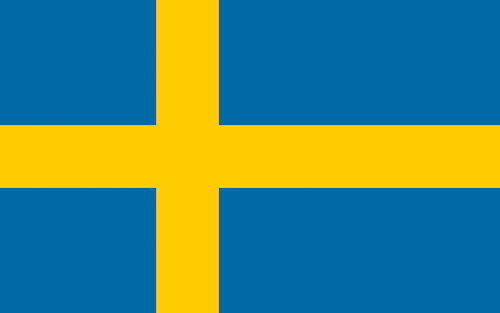By Mats & Patricia Pettersson
-
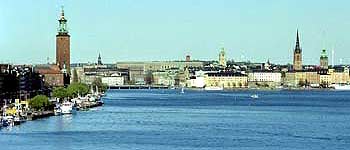
Beautiful Stockholm
This is a story from Kungsholmen in Stockholm, Sweden. Kungsholmen is one of the fourteen islands that comprise Stockholm. Kungsholmen may not be very famous, but there is one event that you probably have heard of, and that is the Nobel Prize ceremony. The Nobel Prize party is held in the City Hall, the building you see on the left-hand side of the picture. The first inhabitants of Kungsholmen were Franciscan monks, arriving here in the 15th century. Today, there are a few more than 50,000 inhabitants on Kungsholmen now.
We live in a flat and have a passion for chile peppers. We grow them, eat them, cook with them, and take pictures of them. We start the seeds in December or January. We put 3-6 seeds in each pot, depending on the varieties. Some are harder to germinate than others; so a few extra seeds may be needed in order to successfully get a plant. We place the pots in a mini-greenhouse on our heated bathroom floor. The floor stays around 25 degrees Centigrade. When the seedlings sprout, we add artificial light to the greenhouse, making sure the temperature is around 20 degrees C. Later on, in February, we move the pots to a window, over the radiator, still with artificial light. What then follows are months of re-potting and lots of care. Around April to May, chaos usually hits our windows, and the Swedish chilehead couple has a hard time to fit them all.
In the beginning of June there is usually no danger for frost, so then we move them out on the balcony. For the first week, we bring them in at night, because it might get too cold for them. Great care needs to be taken even during daytime, because the sun is so strong that the leaves could be burned. So we try to give them some shade. This is a busy time, carrying the pots in and out, and moving them around on the balcony.
The first flowers usually show up in the end of June. Finally, we can start taking pictures. These show the variety in shape and color of chile flowers.
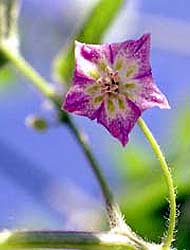
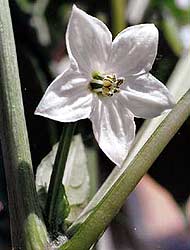
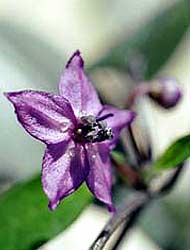
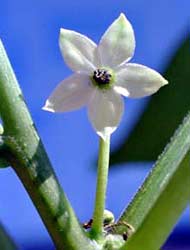
In July and August, the bumblebees are very busy. We are amazed that they find their way up to the 6th floor to our balcony in the middle of the city. But they do a good job, and most of the plants eventually set fruit.
We have grown 63 varieties this year, but mostly focused on Capsicum chinense. The best producer has been the Caronog, from Brazil. The pod resembled grapes on the plant. Very beautiful, and they have been the subject of our neighbor’s curiosity.
Here are some of the chinense varieties that we grew.
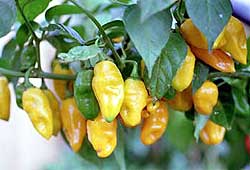
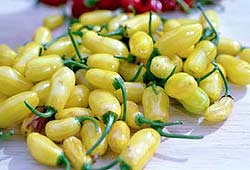

At the end of August and beginning of September, some nights may be cold, with warnings for frost. But usually we leave the plants out on the balcony until we harvest all the pods. Some plants do become like close friends, and we move them inside for a little longer. Some harvest samples . The yellow ones are maraba, also from Brazil. It is a true favorite, and a very decorative plant
.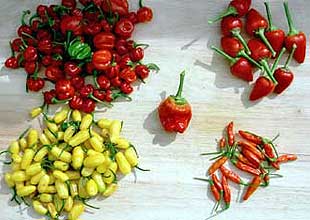
With 63 varieties, maybe you are asking yourself how big our balcony is. It is not that big. It is 6 metres long and 1.5 metres wide (20 by 5 feet). So below are some pictures to illustrate how it looks in August.
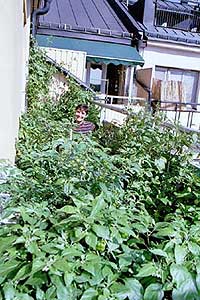
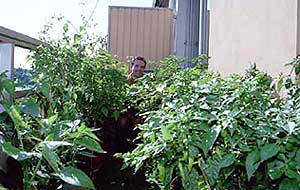
We do have a small grill in the corner, but as you might have guessed, it is more or less unusable the longer we go into the growing season.
Except for all the joy we have with our chiles during summer, we also love all the correspondence and exchanging of seeds with fellow chile-heads. So don’t hesitate do drop us a line, and maybe we can exchange growing experiences. We have a home page, and that is: http://hem.passagen.se/habanero/index.html, and our e-mail address is habanero@home.se
My mother has the pleasure of taking care of the chile plants in the summer, when we go on vacation. But it may not come as a big surprise that she is really happy when we come home again…

